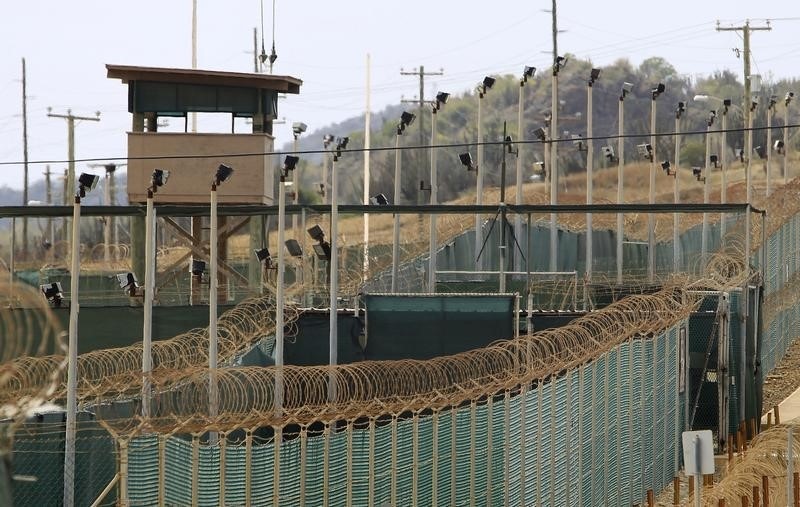
Guantanamo.- The detention center of the illegal Yankee naval base in Guantanamo is known throughout the world for being the scene of torture and other inhuman punishments.
In a context of growing migratory tension and restrictive policies in the United States, the recent decision by President Donald Trump to prepare the facilities of the naval base in Guantanamo to house 30 thousand migrants, triggers a wave of rejection among the inhabitants of Caimanera, a town bordering the illegal area occupied by the Yankees, which will turn 122 years old on February 16.
Once news spread, the streets have turned into setting for talks in which the opinion of the dehumanizing decision predominates:
The residents, mostly families who have lived in the marine town for generations, express their discontent and concern. “We are not a detention center,” says Yaima Céspedes Henrry, a computer scientist, who is current municipal secretary of the Cuban Workers’ Union.
“Our territory cannot be used as a refuge for the migration crisis. We need humane solutions, not measures that dehumanize people,” she adds.
The naval base in Guantánamo, known worldwide for the controversial detention center located there, which has been at the center of debates on human rights since its opening. The idea of turning the enclave into a center for migrants spurred renewed fears among the people of Caimanera.
“The stigma that the base brings is already enough. We already have enough that when people talk about Guantanamo in the world, many only think about the US naval base, so now they see us as a place where migrants are treated like prisoners,” says Yaimé Pacheco Rodríguez, member of the Federation of Cuban Women.
For his part, Doctor Luis Ángel Tamayo Imbert, a young deputy of the Municipal Assambly of People’s Power, said: “We are not talking about the Gaza Strip or any other military base that exists in the world, we are talking about the military base in Guantanamo, which is also an illegally occupied territory, we cannot enjoy those 117.6 square kilometers because they are there, and now to top it off they are turning it into a detention center again. It is not about deepening of hatreds, but about knowing that there is a group of limitations, psychological effects, a group of social action of the people of Caimanera, which is not by chance, there is a restriction that should be clearly explained.”
In the case of Guillermo Paumier Labacena, philosopher and assistant professor at the Caimanera University Center, he believes that: “Trump’s proposal is a response to the migration crisis that ignores the underlying causes of the phenomenon. Furthermore, transferring thousands of people to a place like Guantanamo is not only ineffective, but also immoral.”
The people of Caimanera maintain their firm position: they do not want to be part of a solution that they consider erroneous and harmful. The community unites in a call for empathy and understanding towards migrants, remembering that there is a history behind each one.
The rejection of Donald Trump’s recent announcement reflects not only a sense of local identity, but also a deep desire for dignity and respect towards all human beings, regardless of their origin.